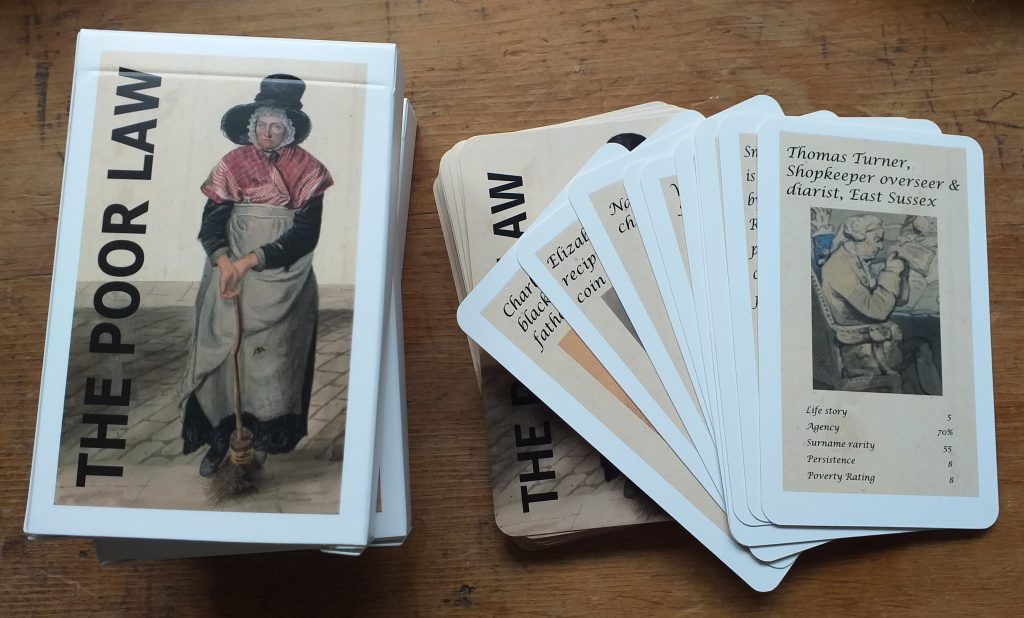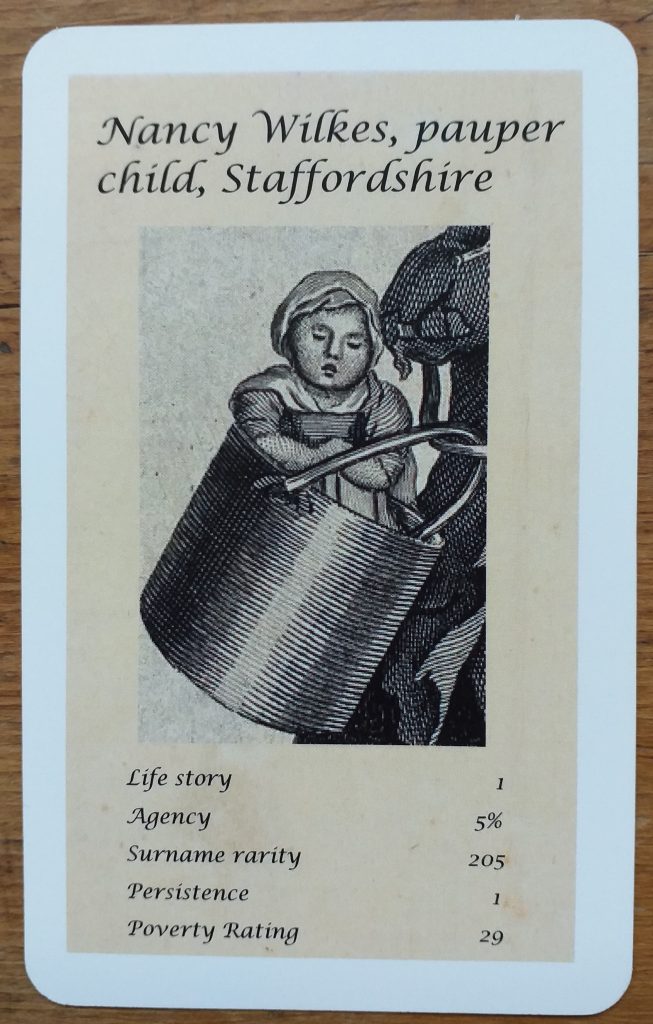The game of Top Trumps depicting people found by the Small Bills project arrived on my doorstep yesterday, and in less than five minutes my son was demanding an explanation of the different categories of score.

Like similar games, each card has a subject (in this case a woman, man, or child associated with the Old Poor Law) and scores in five categories. The scores are frequently assigned approximately or randomly rather than according to a system or to strict data – at least that has been my assumption when playing these games with my children. Therefore the scores are not rigid indicators of research, but either approximations or entirely made up (to ensure a good range of scores across all of the characters).
‘Life Story’ provides a score out of five and notionally indicates the extent to which we can know the details of someone’s life. The East Sussex diarist Thomas Turner is the only one of our people who left such a lengthy personal document, so in honour of this fact he is the only person with the top score of five. Everyone else gets between one and four, based loosely on how well we can hope to research their biography, and find out details of their lives.
Agency is given as a percentage, and alludes to the range of action open to each person. The dead pauper Charles Aldritt has an agency score of zero, whereas the litigious Cumbrian businessman Charles Thurnam has the highest score (95%) in recognition of his willingness to throw his weight around.
Surname rarity has a greater measure of system behind it. I looked at the prevalence or otherwise of each surname according to the website https//:forebears.io and then converted the rankings into a score out of 1000. This process awards Ann Tomsat the highest score of 995, and gives Elizabeth Wilson just 10.
Persistence refers to the number of decades (out of ten) where we might hope to be able to trace the person in historical records, including but not limited to the vouchers. I had to tinker with this set of scores a little, so they do not necessarily represent what I know to be true or feel to be possible for all characters: the risk was that, otherwise, many people would have had a score of just one!

Finally Poverty Rating ranks the cards from one to thirty based on the severity of their poverty relative to each other. In this category the Staffordshire child Nancy Wilkes gets a score of 29: I was very pleased with the illustration for this card!
More information on some of the people featured in the Old Poor Law Top Trumps can be found in the blogs on this website.